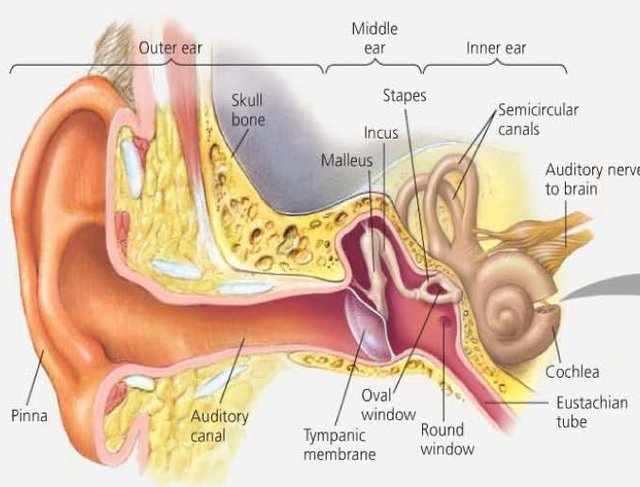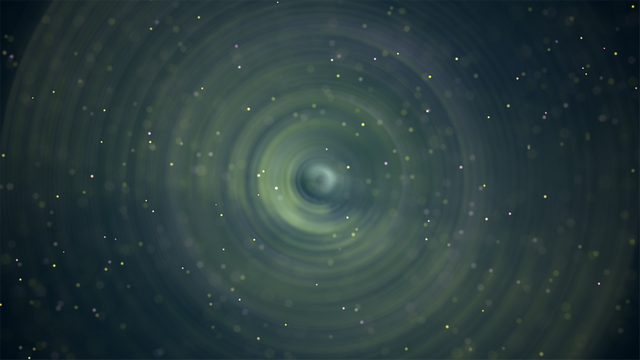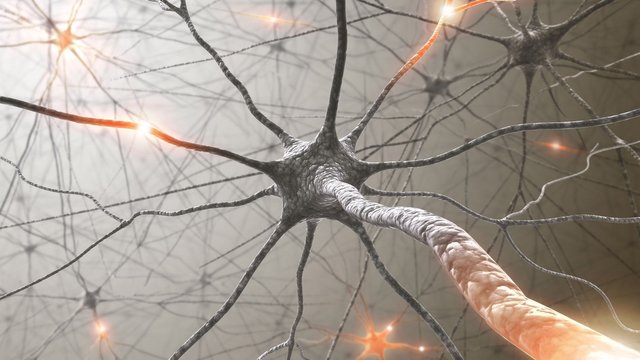How Do We Hear Sound?
Most of the time, we don’t pay attention to sound. If you think about it; your brain is able to pick up on ‘noise’ from outside and convert it into something that you can make sense of. That alone is a baffling thought so let’s find out how we can do this.
Sound processing
Before we begin talking about how sound is converted into this ‘brain language’, we must first understand what sound is.
What is ‘sound’?
If you recall from studying Physics at school; sound is a wave – a longitudinal wave to be more precise [1]. Instead of a regular (transverse) wave that goes up and down, a longitudinal wave stretches and squeezes. These ‘stretches and squeezes’ are called ‘expansions and compressions’ respectively.
How does sound travel?
Sound travels by vibrating the particles around it, producing squeezing and stretching (expansions and compressions). These expansions and compressions of longitudinal waves, are simply where the particles are spread out (expansions) or clumped up (compressed). If there are no particles, for example in a vacuum; sound cannot travel through. This is because there cannot be any expansions or compressions.
If you have a slinky you can have a lot of fun producing longitudinal waves that you can see. Just watch the video below:
The Human Ear
Your ear is designed incredibly well so that you can pick up on sounds of different volumes and pitches. You can also generally be able to tell where the sounds come from.
How does the Ear detect sound?
The outer ear:
The folds on the outside of your ear are called the Pinna. When the sound waves (particle vibrations) hit the Pinna, they are funnelled into your ear canal. The ear canal acts as an amplifier for them as they are passed through it. At the end of this canal you have what you probably have heard of before; the ear drum. Its technical term is the Tympanic Membrane [2]. The ear drum is what separates the outer ear from the middle ear.The ear drum:
When these waves hit the ear drum, its response is like… hitting a drum. Generally speaking, the ear drum turns these waves into physical vibrations which can be passed on to the tiny bones in the middle ear.The middle ear:
The middle ear consists of tiny little bones which act as levers, to further amplify the physical vibrations produced by the ear drum. These amplified vibrations now reach the Cochlea; which is the inner ear.The inner ear:
The inner ear is comprised of the Cochlea - which if you’ve seen a diagram of the inside of an ear before, is the large snail shaped bone. This part of the ear is where the magic happens.

The Cochlea
Imagine throwing a rock into a river; you would expect to see ripples spread out from the point of contact of the rock and water. This is what happens in the Cochlea. These amplified vibrations effectively strike the Cochlea which contains a fluid that begins to ripple throughout it.
Submerged in this fluid are cells called Hair cells. As you can imagine, this is because they look like hairs. These tiny little hair cells detect the ripples in the fluid causing them to move a certain way depending on the intensity of the physical vibrations – which depends on the location, pitch and volume of sound the ear is detecting.
What do the Hair Cells achieve by moving?
These hair cells are covered in gates [3]. Think of it this way; when there is no sound at all, there are no ripples in the fluid meaning there is no movement in the hairs – so they are all lined up and the gates are closed.
When the hairs begin detecting ripples they start to move about which starts opening and closing gates a specific way. This is like putting your hand on a gate and opening and closing it by waving your hand back and forth. When these gates open, they allow for ions to move into the hair cells which allows chemicals (neurotransmitters) to diffuse into specifically designed nerves for sound, called Auditory nerves. Signals are then generated and sent to your brain where they are processed.
Impaired hearing is usually when these sensitive little hair cells cannot function. This can occur from persistent loud noises!
Pretty amazing stuff right? It is also worth noting that the structures I have mentioned in this article are not the only ones in the Ear. The Ear is a highly complex organ which doesn’t just help you hear sound, but also helps do other things such as help keep your balance.
Remember to keep your music down to a sensible volume!
If you have any questions, ask them below and until next time, take care.
~ Mystifact
References:
[1] - http://www.dosits.org/science/sound/whatissound/
[2] - http://www.stanfordchildrens.org/
[3] - http://www.indiana.edu/~emusic/acoustics/ear.htm
Please note; no copyright infringement is intended from the images used. All images used have been labelled for re-use on Google Images. If any artist or designer has any issues with any of the content used in this article, please don’t hesitate to contact me to correct the issue.
Relevant articles:
Why do we Dream?
What is Cancer? How does it kill?
Drugspection: Episode 1 | The Effects of Alcohol on the Body and Mind
Previous articles:
Can a coin falling from the Empire State Building kill you?
Will Teleportation Ever Be Possible?
Wonders of Quantum Physics: “What are Quantum Computers?” – Episode 3 (FOR BEGINNERS!)
Follow me on: Facebook, Twitter and Instagram, and be sure to subscribe to my website!



Why do we hear or "how" do we hear? :-)
Very good point, my apologies!
Hah, no problem :-)
wow and the best part is you are appropriately named Logic :)
Haha ;-)
The amazing creation of God Almighty. Very informative post.
Thank you for your comment. It's baffling isn't it!
Sure is. So much complexity in the Human Body.
Excellent. Thanks for this.
Absolutely my pleasure!
Bloody brain .. The mastermind behind everything :P
Agreed that is very much the case! Thanks for your comment :)